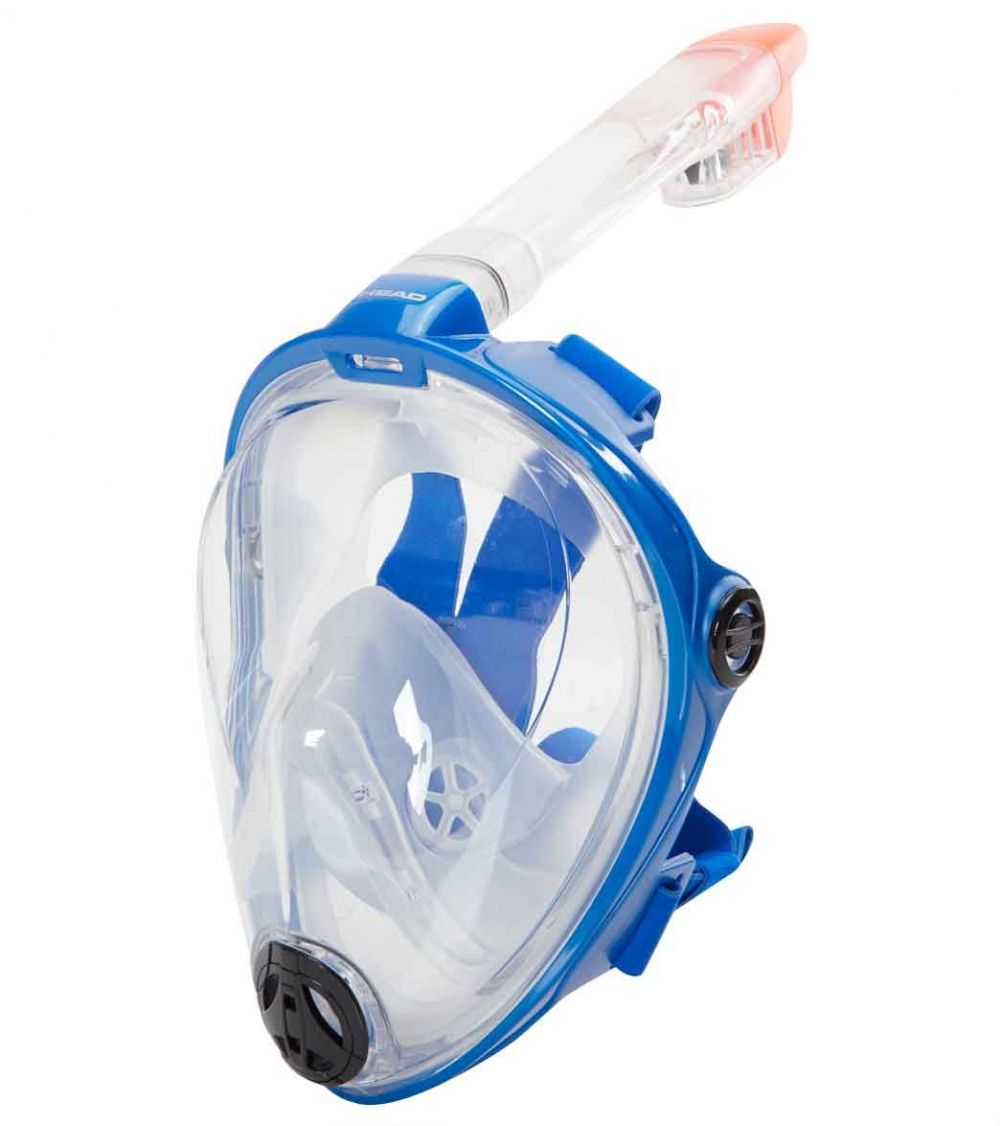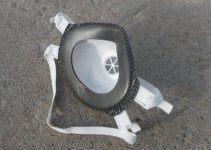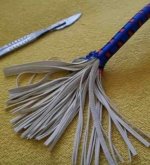This thread is about the engineering challenges of making a reasonably effective DIY respirator. All responses that do not specifically address that will be considered "off topic" and they will be moved to an appropriate thread.
With the shortage of N95 "disposable" dust masks, I feel that the best way forward is to identify ways to make an effective respirator that can be sterilized and re-used, along with a readily available filter media that can be replaced as often as necessary.
A "mask" catches your cough and sneeze to help reduce the probability that you might infect the people that are near you when you have some type of flu. A "half-face respirator" covers your mouth and nose to prevent you from breathing-in a mist from a nearby person who has coughed or sneezed.
The top pic (below) is the now-famous "N95" mask, and the bottom pic is a half-face respirator. Notice the metal strip across the nose-bridge to help hold the shape of the filter to your face in that area.

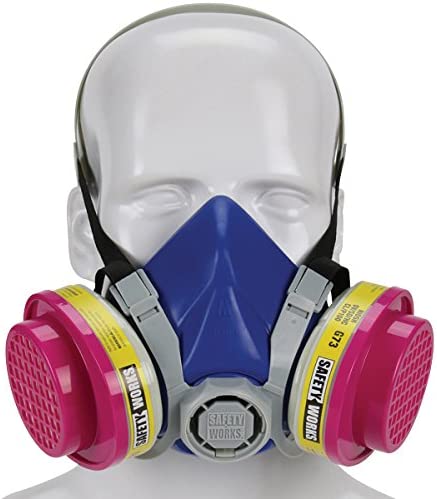
As a woodworking enthusiast, I have occasionally used a "dust mask" to avoid breathing in fine sawdust that was floating in the air (table saw, router, etc), and I found them to be grossly inadequate, especially if I was suddenly required to talk, which flexes the "barely adequate" seal around my face. It may "catch" my own cough, but as far as breathing-in the air near me, it was less effective than holding my breath for half a minute.
I am not a certified medical professional, but I have worked for many years in the past with a "hazardous waste" clean-up company, and I was required on many occasions to work while wearing a respirator.
A popular alternative DIY filter media for a viral breakout is the "HEPA" filters for home air-conditioning units, or HEPA vacuum cleaner bags (HEPA = High Efficiency Particulate Air). Be aware if you are using a common dust mask, a HEPA filter of the same size will be somewhat restrictive to flow the same amount of air, due to how dense it is, in order to capture smaller particles. For a HEPA filter to flow the same amount of air, it should have more surface area.
I like cylindrical bottles for the filter housing because the filter media can be held on by a common "hose clamp". In order to provide a stiffer place for the hose clamp to tighten against, I am showing a white disc with holes that I cut out from an HDPE kitchen cutting board. It drills and cuts with a jigsaw quite easily. Another method shown here is the red plastic sheet that was cut into a ribbon from the lid of a common plastic storage bin. Either one of these reinforcements can be epoxied-inside the bottle. Large hose clamps can be found in the large hardware stores in the sections where a clothes dryer vent is socked, or the central air conditioning duct section. Or, you can connect two hose clamps to each other to make a larger one.
The bottle can be cut shorter to make the filter housing more compact, or the extra length can be filled with activated charcoal from an aquarium supply. If you add charcoal, wrap it in a paper towel to prevent breathing-in any charcoal dust. The standard water-bottle cap opening is adequate to breathe through, and a single filter is adequate for a trip to the grocery store. The common industrial OSHA respirators (shown at the top of the post) have two filters because they must be able to operate for a 12 hour shift without becoming clogged.
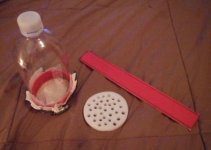
On the left is a common 9-ounce water bottle for scale, next is a slightly fatter "one liter" beverage bottle (with filter media attached), then a half-gallon vinegar bottle I had that is 4-1/2 inches in diameter, and last is a one-gallon jug of chlorine bleach, 6-inches in diameter. I found the soda bottle with the paper filter on it easy enough to breath through, but the half-gallon jug would provide double the filter area if that was desired.
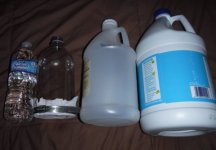
The entire premise of this build is that it's not ideal to be depending on disposable masks that make a poor fit, and you must constantly be looking for an additional supply. If you make a respirator that is formed to fit your particular face, it will fit well. Then, use a filter media that is readily stocked and easily found, along with being very affordable. HEPA vacuum bags are such a filter material, along with the filters from central air conditioning units.

The video I am linking to here is a useful starting point, even though I feel that there is significant room for improvement. Be aware that the bottle in this video is a THREE-liter size.
https://www.youtube.com/watch?v=QODJN3UHluA
[youtube]QODJN3UHluA[/youtube]
The filter media (sheet of HEPA filter paper) can be thrown away. The respirator itself can be sterilized by wiping it down with alcohol, hydrogen peroxide, or heating it to a minimum of 140F / 60C for 30 minutes. Higher temps will reliably kill all pathogens in a shorter time, but higher temps may also damage the respirator depending on the materials used to make it. It can also be exposed to ultraviolet light (UV).
If you are fortunate enough to have acquired a factory-made half-face respirator that fits you well, do not throw away the filter cannisters after they have been used up to the allotted amount of time. They can be gutted and then covered with new filter media made from HEPA filter cloth.
With the shortage of N95 "disposable" dust masks, I feel that the best way forward is to identify ways to make an effective respirator that can be sterilized and re-used, along with a readily available filter media that can be replaced as often as necessary.
A "mask" catches your cough and sneeze to help reduce the probability that you might infect the people that are near you when you have some type of flu. A "half-face respirator" covers your mouth and nose to prevent you from breathing-in a mist from a nearby person who has coughed or sneezed.
The top pic (below) is the now-famous "N95" mask, and the bottom pic is a half-face respirator. Notice the metal strip across the nose-bridge to help hold the shape of the filter to your face in that area.


As a woodworking enthusiast, I have occasionally used a "dust mask" to avoid breathing in fine sawdust that was floating in the air (table saw, router, etc), and I found them to be grossly inadequate, especially if I was suddenly required to talk, which flexes the "barely adequate" seal around my face. It may "catch" my own cough, but as far as breathing-in the air near me, it was less effective than holding my breath for half a minute.
I am not a certified medical professional, but I have worked for many years in the past with a "hazardous waste" clean-up company, and I was required on many occasions to work while wearing a respirator.
A popular alternative DIY filter media for a viral breakout is the "HEPA" filters for home air-conditioning units, or HEPA vacuum cleaner bags (HEPA = High Efficiency Particulate Air). Be aware if you are using a common dust mask, a HEPA filter of the same size will be somewhat restrictive to flow the same amount of air, due to how dense it is, in order to capture smaller particles. For a HEPA filter to flow the same amount of air, it should have more surface area.
I like cylindrical bottles for the filter housing because the filter media can be held on by a common "hose clamp". In order to provide a stiffer place for the hose clamp to tighten against, I am showing a white disc with holes that I cut out from an HDPE kitchen cutting board. It drills and cuts with a jigsaw quite easily. Another method shown here is the red plastic sheet that was cut into a ribbon from the lid of a common plastic storage bin. Either one of these reinforcements can be epoxied-inside the bottle. Large hose clamps can be found in the large hardware stores in the sections where a clothes dryer vent is socked, or the central air conditioning duct section. Or, you can connect two hose clamps to each other to make a larger one.
The bottle can be cut shorter to make the filter housing more compact, or the extra length can be filled with activated charcoal from an aquarium supply. If you add charcoal, wrap it in a paper towel to prevent breathing-in any charcoal dust. The standard water-bottle cap opening is adequate to breathe through, and a single filter is adequate for a trip to the grocery store. The common industrial OSHA respirators (shown at the top of the post) have two filters because they must be able to operate for a 12 hour shift without becoming clogged.

On the left is a common 9-ounce water bottle for scale, next is a slightly fatter "one liter" beverage bottle (with filter media attached), then a half-gallon vinegar bottle I had that is 4-1/2 inches in diameter, and last is a one-gallon jug of chlorine bleach, 6-inches in diameter. I found the soda bottle with the paper filter on it easy enough to breath through, but the half-gallon jug would provide double the filter area if that was desired.

The entire premise of this build is that it's not ideal to be depending on disposable masks that make a poor fit, and you must constantly be looking for an additional supply. If you make a respirator that is formed to fit your particular face, it will fit well. Then, use a filter media that is readily stocked and easily found, along with being very affordable. HEPA vacuum bags are such a filter material, along with the filters from central air conditioning units.

The video I am linking to here is a useful starting point, even though I feel that there is significant room for improvement. Be aware that the bottle in this video is a THREE-liter size.
https://www.youtube.com/watch?v=QODJN3UHluA
[youtube]QODJN3UHluA[/youtube]
The filter media (sheet of HEPA filter paper) can be thrown away. The respirator itself can be sterilized by wiping it down with alcohol, hydrogen peroxide, or heating it to a minimum of 140F / 60C for 30 minutes. Higher temps will reliably kill all pathogens in a shorter time, but higher temps may also damage the respirator depending on the materials used to make it. It can also be exposed to ultraviolet light (UV).
If you are fortunate enough to have acquired a factory-made half-face respirator that fits you well, do not throw away the filter cannisters after they have been used up to the allotted amount of time. They can be gutted and then covered with new filter media made from HEPA filter cloth.



